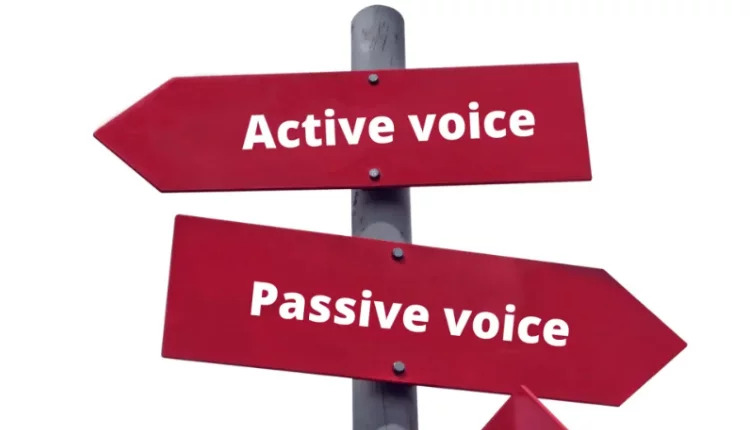Active and Passive Voice Explained
If you’re a writer, it’s important to understand the difference between active voice and passive voice. In this article, we’ll explain active voice and passive voice, and how you can use them effectively in your writing. We’ll also go over some tips on how to spot any mistakes you might make so that you can make sure your writing is as clear and concise as possible. Let’s get started.
- What is a voice in grammar?
- How does the use of voice influence your writing style?
- Active Voice and Passive Voice
- More Examples of Active Voice
- More Examples of Passive Voice
- Why is it important to understand active voice and passive voice?
- When to use an active voice?
- When to use a passive voice?
- How to identify mistakes in using active and passive voice?
- How to change the passive voice into an active voice?
What is a voice in grammar?
In grammar, voice is the form of a verb that indicates whether the subject is performing or receiving the action of the verb. Writers need to understand what is active voice and passive voice. There are two basic voices in English: active and passive. In the active voice, the subject of the sentence is the one doing the action. For example, “I am writing a blog post.” In the passive voice, the subject is being acted upon by the verb.
For example, “The blog post is being written by me.” While both active and passive voice is grammatically correct, writers should generally strive to use the active voice as it is more concise and direct. Additionally, employing an active voice can make your writing sound more confident and exciting.

However, there are situations where using the passive voice may be preferable- for instance, if you are deliberately trying to de-emphasize the subject of the sentence. Ultimately, voice is an important tool that writers can use to control the flow and tone of their writing. By understanding what is an active voice and passive voice and how to employ them effectively, writers can create more nuanced and impactful writing.
How does the use of voice influence your writing style?
Many people believe that the use of active voice or passive voice in grammar can greatly influence and enhance a person’s writing style. This statement can be conceded because by using a specific voice, an author can convey their message more effectively to the reader.
For example, if an author wants to sound more authoritative, they may use the active voice. On the other hand, if they want to sound more compassionate, they may use passive voice. In my opinion, the use of different styles can be very effective in writing, as it allows the author to convey their emotions and thoughts more clearly to the reader.

Voice is just one of the many elements that can contribute to an enhanced writing style. Other factors beyond an active voice and passive voice include word choice, sentence structure, and punctuation can also play a role in making a person’s writing style more effective. By understanding how these elements work together, we can develop a unique writing style that will help us communicate our messages more effectively to our audience.
Active Voice and Passive Voice
Most people have a basic understanding of what an active voice is and what a passive voice is. In general, the active voice is used when the subject of the sentence is acting, while the passive voice is used when the subject is being acted upon.
However, there are some cases where the active voice can be used in a way that sounds unnatural, and there are also times when the passive voice can be quite effective. To understand how to use these two voices effectively, it’s important to understand what they are and how they work.
The active voice is usually easier to read and sounds more natural than the passive voice. It’s important to note that the active voice can be used in both formal and informal writing. In addition, using an active voice can help to make your writing sound more direct and authoritative.

However, there are times when you may want to use the passive voice instead of the active voice. For example, if you are trying to downplay the importance of something, or if you want to avoid sounding overly opinionated, using the passive voice can be a good choice.
Ultimately, whether you use active or passive voice will depend on what you are trying to achieve with your writing. If you’re not sure which one to use, consider what effect you want your writing to have on your readers. Do you want to sound confident and authoritative? If so, using an active voice is usually your best bet.
On the other hand, if you want your writing to sound more subdued or objective, using a passive voice may be a better choice. Ultimately, there is no right or wrong answer – it all depends on what you are trying to achieve with your writing.
More Examples of Active Voice
The active voice is more straightforward and effective than the passive voice. In a sentence written in the active voice, the subject is acting. For example, “I am writing a blog post.” In this sentence, the subject (I) is acting (writing). In contrast, a sentence written in the passive voice would read, “A blog post is being written by me.” In this sentence, the subject (blog post) is not performing any action; instead, it is receiving the action (being written).
The passive voice can make a sentence more complicated and less effective. It can also obscure who is acting. In the following example, “Two hundred cookies were eaten by the students,” it is not clear who ate the cookies.
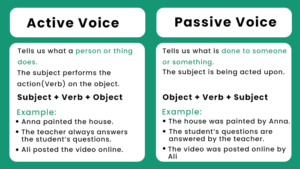
However, if the sentence were written in the active voice—“The students ate two hundred cookies”—it would be more clear and more concise. The active voice is more straightforward and effective than the passive voice, making it a good choice for most writing situations.
More Examples of Passive Voice
The passive voice is often criticized for being vague and awkward, but there are times when it can be quite useful. The passive voice can be more concise and effective than the active voice in certain situations. For example, consider the following sentence: “The lamp was knocked over by a gust of wind.” This sentence is more concise than its active counterpart: “A gust of wind knocked over the lamp.”
In addition, the passive voice can be used to emphasize the subject of the sentence. For instance, if we want to emphasize that the lamp was knocked over, we would use the passive voice: “The lamp was knocked over.”

On the other hand, if we want to emphasize that a gust of wind knocked something else over, we would use the active voice: “A gust of wind knocked the vase over.” As you can see, the passive voice can be a powerful tool in your arsenal of writing techniques. Use it sparingly, but don’t be afraid to utilize it when it can help you achieve your desired effect.
Why is it important to understand active voice and passive voice?
The usage of active voice and passive voice can be a bit confusing for writers. It’s important to be able to use both appropriately to create effective writing. Active voice is direct. The subject is performing the action stated by the verb. Passive voice, on the other hand, happens when the subject is acted upon by the verb. This usage can make writing sound vague or complicated.

Understanding the precise usage of active voice and passive voice will help improve your writing skills. Using active voice gives sentences more impact and makes them easier to understand. Passive voice should be used sparingly, as it can make your writing sound dull or unclear. Pay attention to how you use these two types of voice in your writing, and you’ll see a marked improvement in the quality of your work.
When to use an active voice?
To identify when to use an active voice, look at the subject and see if it is acting in the sentence. If so, then you can use an active voice. For example, “The cashier counted the money.” In this sentence, the subject is “cashier” and the verb is “counted,” so this is an example of when you would use an active voice.
Active voice is used when you want to be direct and when you want the subject to act. The passive voice would be used when you don’t want to focus on the subject or when the action isn’t important.
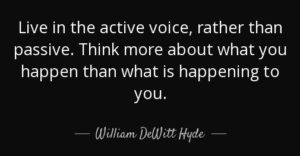
For example, “The money was counted by the cashier.” In this sentence, passive voice is used because the focus is on the money and not on who is counting it. This makes passive voice perfect for situations when you don’t want to draw attention to the subject.
There are a few advantages of using an active voice that can make your writing more engaging. First, it is usually more concise than using a passive voice. Second, it can make your writing sound more assertive and confident.
Third, it can help to create a clear and direct style of writing. fourth, using an active voice can enhance your storytelling by making it more action-packed and exciting.
In short, there are many good reasons to use an active voice in your writing. However, as with anything else, it is important to use it in moderation and not overdo it. When used effectively, using an active voice can be a great way to add impact and interest to your writing.
When to use a passive voice?
The passive voice is a grammatical construction (typically using the verb “to be” plus a past participle) in which the subject of a sentence or clause denotes the recipient of the action rather than the doer of the action.
For example, in the sentence “The ball was thrown by John,” John is the actor and the ball is the recipient; therefore, this is an example of a sentence in the passive voice. The passive voice is used in a variety of situations, some of which are listed below.
- To emphasize the subject or recipient of the action: In the above example, if you wanted to emphasize that it was John who threw the ball (rather than someone else), you would use the passive voice.
- When the actor is unknown: If you don’t know who threw the ball, you can say “The ball was thrown” using the passive voice.
- When using certain verbs: Some verbs can only be used in the passive voice. For example, you can say “The cake was eaten by Then them,” but you cannot say “Then they ate the cake.”
- To make your writing sound more formal: The passive voice can make your writing sound more formal and objective.
- To avoid using first or second-person pronouns: In academic and scientific writing, using first or second-person pronouns (I, we, you) is generally not allowed. The passive voice can help you avoid using these pronouns.
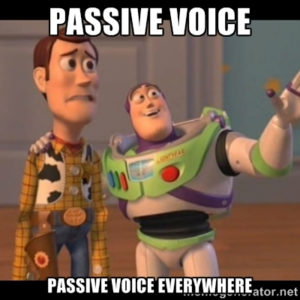
However, there are also situations where using the passive voice is not recommended as noted in the following instances:
– When the sentence sounds unclear: The use of passive voice can sometimes make a sentence sound unclear. For example, “Two dozen cookies were baked by me” sounds clearer than “I baked two dozen cookies.”
– When the sentence is too long: The use of passive voice can sometimes make a sentence seem unnecessarily long. For example, “The use of passive voice is not recommended by many writing experts” sounds better than “Many writing experts do not recommend the use of passive voice.”
– When you want to be direct: The use of passive voice can sometimes make a sentence seem indirect. For example, “The senator was asked several questions by the reporter” sounds better than “Several questions were asked of the senator by the reporter.”
Knowing when to use the passive voice and when to avoid it is an important skill for any writer to master. By taking the time to understand when passive voice is appropriate and when it is not, you can ensure that your writing is clear, concise, and direct.

Using too many passive constructions in your writing can make it sound vague and transform simple sentences into ones that are unnecessarily complicated.
In addition, some readers find sentences in the passive voice to be less interesting to read. As a result, it is important to use discretion when deciding whether or not to use a passive construction in your writing.
How to identify mistakes in using active and passive voice?
One of the most common mistakes made in writing is the misuse of active and passive voice. To effectively communicate your ideas, it is important to use the correct verb tense and voice.
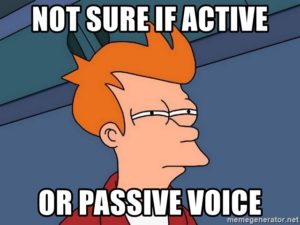
So, how can you identify when you have made a mistake in using active or passive voice? And what are some tips for fixing these errors?
– Pay attention to the placement of the verbs in your sentences. Active voice typically has the verb closer to the subject, while passive voice has the verb further from the subject.
– Take note of whether the subject is performing an action or being acted on. If it’s acting, then it should be in an active voice. If it’s being acted on, then it should be in a passive voice.
– Be careful not to overuse passive voice. While there are certainly times when it is appropriate to use passive voice, using too much of it can make your writing sound vague and confusing.
If you find that you have made a mistake in using active or passive voice, don’t worry! These tips should help you identify and correct the error so that you can communicate your message clearly and effectively.
How to change the passive voice into an active voice?
Many people subscribe to the notion that the active voice is always better than the passive voice. While it is true that the active voice can be more direct and less wordy, there are times when the passive voice is a better choice.
In addition, changing the passive voice into the active voice is not always a simple matter of removing the auxiliary verb and changing the subject of the sentence.
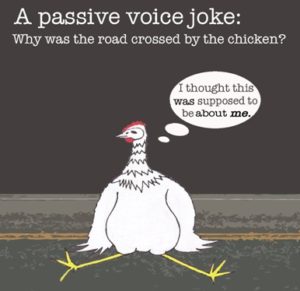
Steps in changing the passive voice into an active voice
The steps involved in changing the passive voice into an active voice depend on the structure of the sentence. However, some general steps can be followed in most cases.
The first step is to identify the subject of the sentence. In a sentence written in the passive voice, a subject is typically an object or concept rather than a person or thing. In addition, the subject will usually be preceded by a preposition, such as “by” or “with.” Once the subject has been identified, it can be changed to the active voice by making it the subject of the sentence.
The next step is to remove the auxiliary verb from the sentence. An auxiliary verb is typically used to indicate tense or mood and is not essential to the meaning of the sentence. In many cases, simply removing the auxiliary verb will not change the meaning of the sentence.
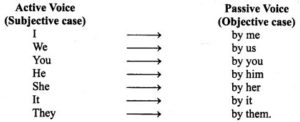
However, in some cases, it may be necessary to use a different auxiliary verb to maintain the same meaning. For example, if a sentence is written in the past tense using the auxiliaries would and could, changing would to could would change future tense to past tense.
Finally, once the steps have been followed to change passive voice into active voice, it is important to check that the new sentence makes sense and communicates what you intended to say. While changing passive voice into active voice can sometimes be tricky, following these steps can help ensure that your meaning is clear.

